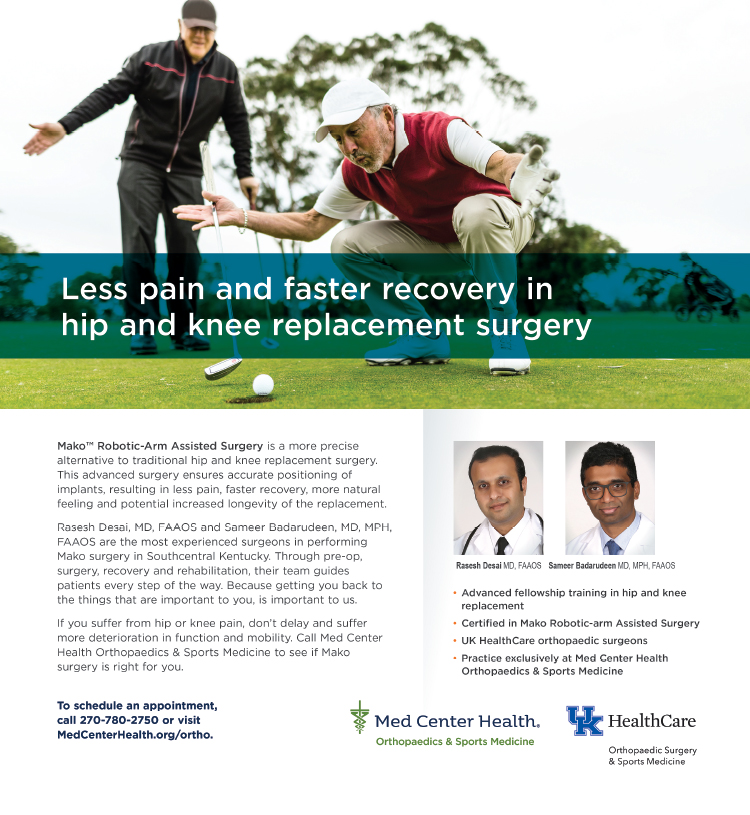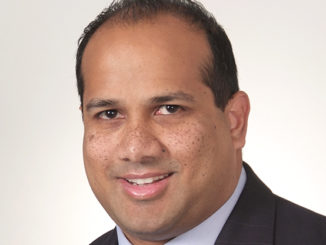
Imagine being in so much pain it’s hard to go up the stairs in your own home. You can’t walk the dog. You can’t bend over to pick something up. Because of severe hip pain, this is the sort of life Kristal Rubin faced every morning when she woke up – if she got any sleep at all the night before. Most nights, she tossed and turned, unable to get comfortable. Until now.
“Now” is after hip replacement surgery at The Medical Center at Bowling Green. Kristal had her surgery in the morning, was up walking with a walker that same day and was back home by late afternoon. She received physical rehabilitation at home for two weeks, followed by about six weeks of outpatient rehab. Kristal says she had zero pain even just a few weeks after surgery. Kristal experienced a complete turnaround from when pain made even simple activities of daily living an ordeal.
“Stairs, laundry, everything is so much easier,” Kristal says. “After my surgery, I was excited to get back to gardening, walking the dog, doing more shopping, more traveling and just everyday life pain free. My advice to anyone living with hip pain is don’t wait to get evaluated. Why would you wait when you can get back to the things you like to do in a matter of a few weeks?”
Why the need for joint replacement?
In Kristal’s case, degeneration had caused the cartilage in her hip to wear away until her joint was bone-on-bone. In a healthy hip, cartilage creates a smooth, lubricated surface where the bones meet to form the joint. This provides shock absorption and lets the bones glide over each other. Unfortunately, cartilage doesn’t heal itself very well. When it is worn down or damaged, the result is pain – and a joint that can’t be trusted anymore.
Hip replacement involves removing the arthritic ball of the femur and inserting a metal stem-like component into the bone. The hip socket is also replaced. Kristal’s surgery was Mako robotic-arm assisted hip replacement, performed by Rasesh Desai, M.D., FAAOS, orthopaedic surgeon with Med Center Health Orthopaedics & Sports Medicine. Mako helps preserve healthy bone and offers accurate implant positioning. which in turn can result in increased longevity of the implant.
Through its Same Day Outpatient Joint Replacement Pathway Program, the Med Center Health Total Joint Replacement team stays with patients during the entire process of their surgery and recovery. Through pre-op, surgery, recovery and rehabilitation, they guide patients every step of the way.
Why Mako robotic-arm assisted surgery?
Mako robotic-arm assisted surgery begins with 3D modeling of the patient’s joint and anatomy. Every step of the surgery is planned ahead of time with more accuracy. Robotic surgery has also been shown to provide increased safety and reduce risk to soft tissue surrounding the joint. Mako robotic arm-assisted total hip surgeries, compared to traditional hip replacement, reduces the chances of human error in implant positioning, provides better alignment and possibly improved survival of the artificial joint. Well-balanced joint replacement through robotic-assisted surgery also results in less pain and faster recovery.
The majority of patients experience significant pain reduction and improved quality of life after hip replacement surgery, but every patient is unique. If you are considering hip replacement surgery, be sure to discuss the risks and benefits as well as expected outcomes with your doctor.
Rasesh Desai, M.D., FAAOS, and Sameer Badarudeen, M.D., FAAOS with Med Center Health Orthopaedics & Sports Medicine, are both highly experienced and skilled with Mako robotic-arm assisted hip and knee replacement surgeries. They are UK HealthCare surgeons and professors of orthopaedic surgery at University of Kentucky Orthopaedics and Sports Medicine Department. For more information, visit MedCenterHealth.org/ortho or call Med Center Health Orthopaedics & Sports Medicine at 270-780-2750.
-submitted by Med Center Health





